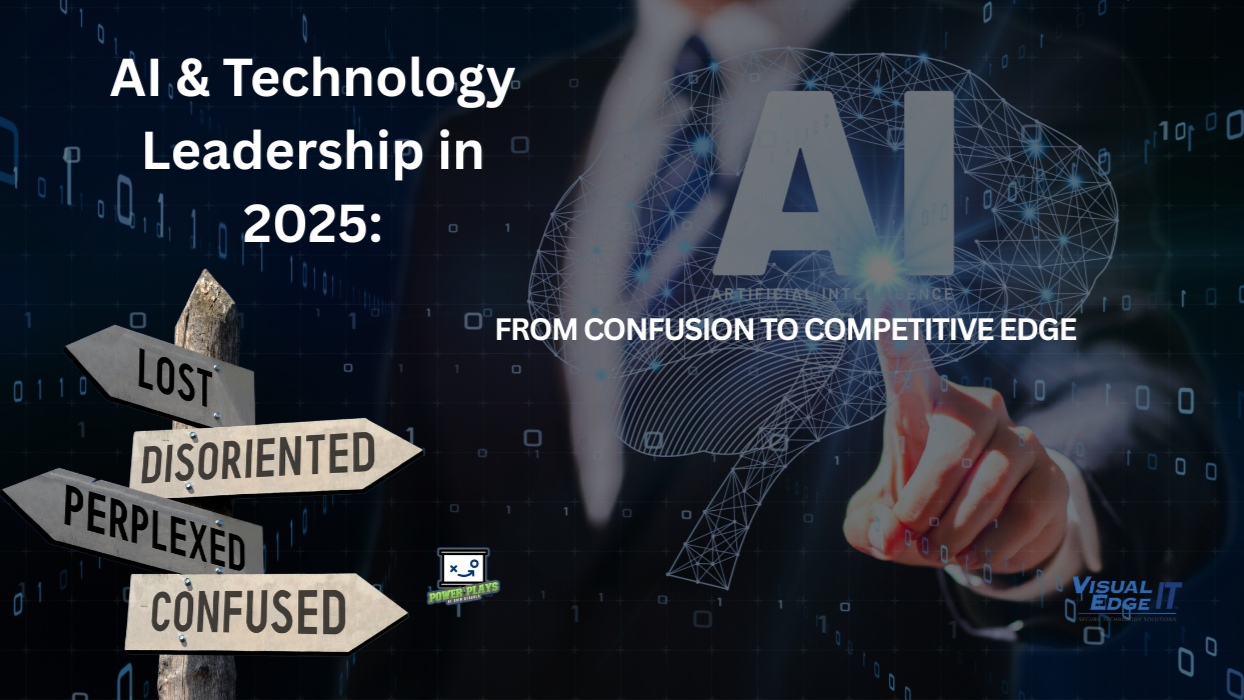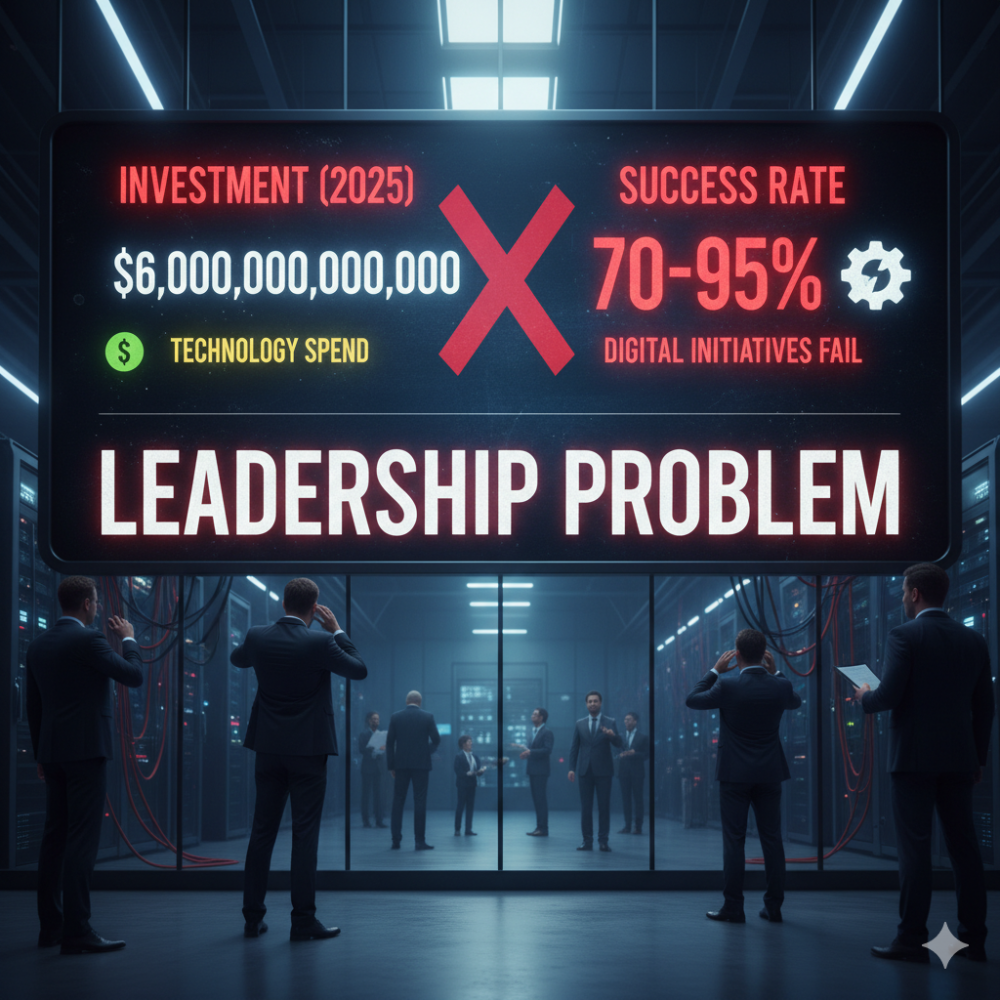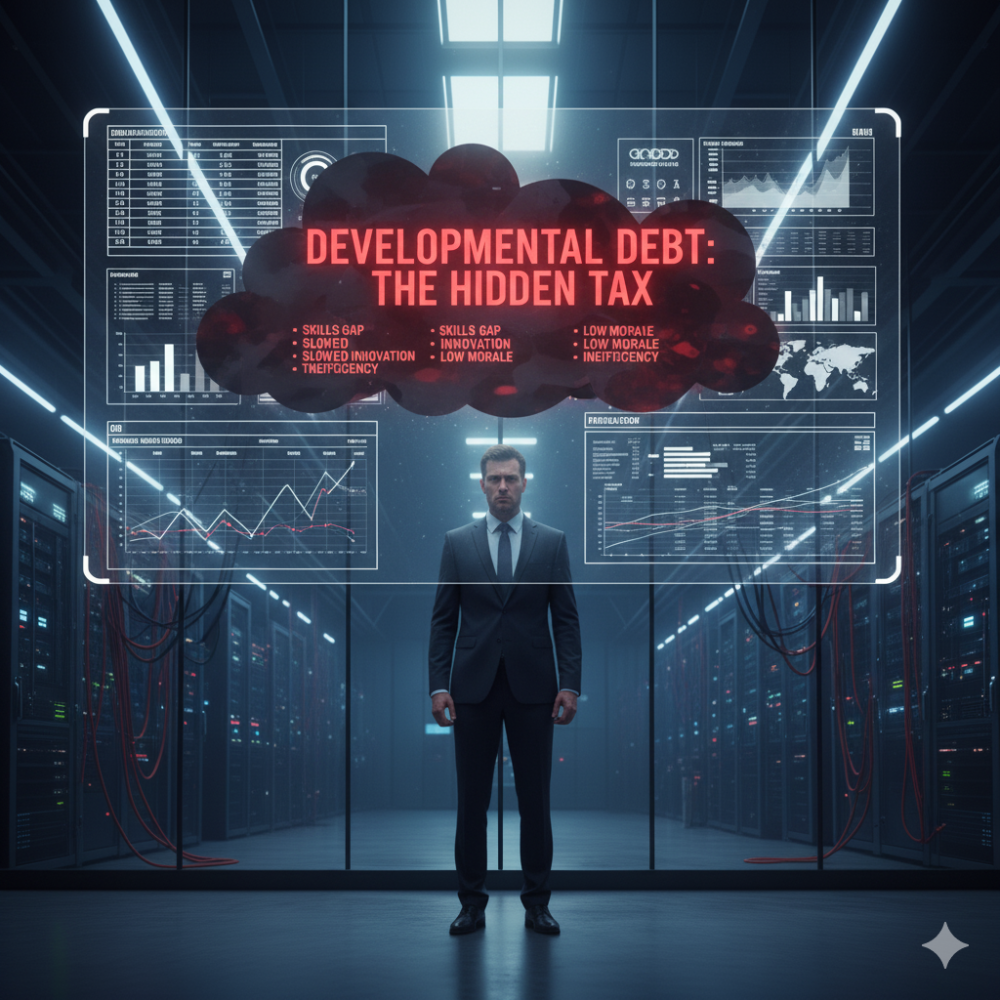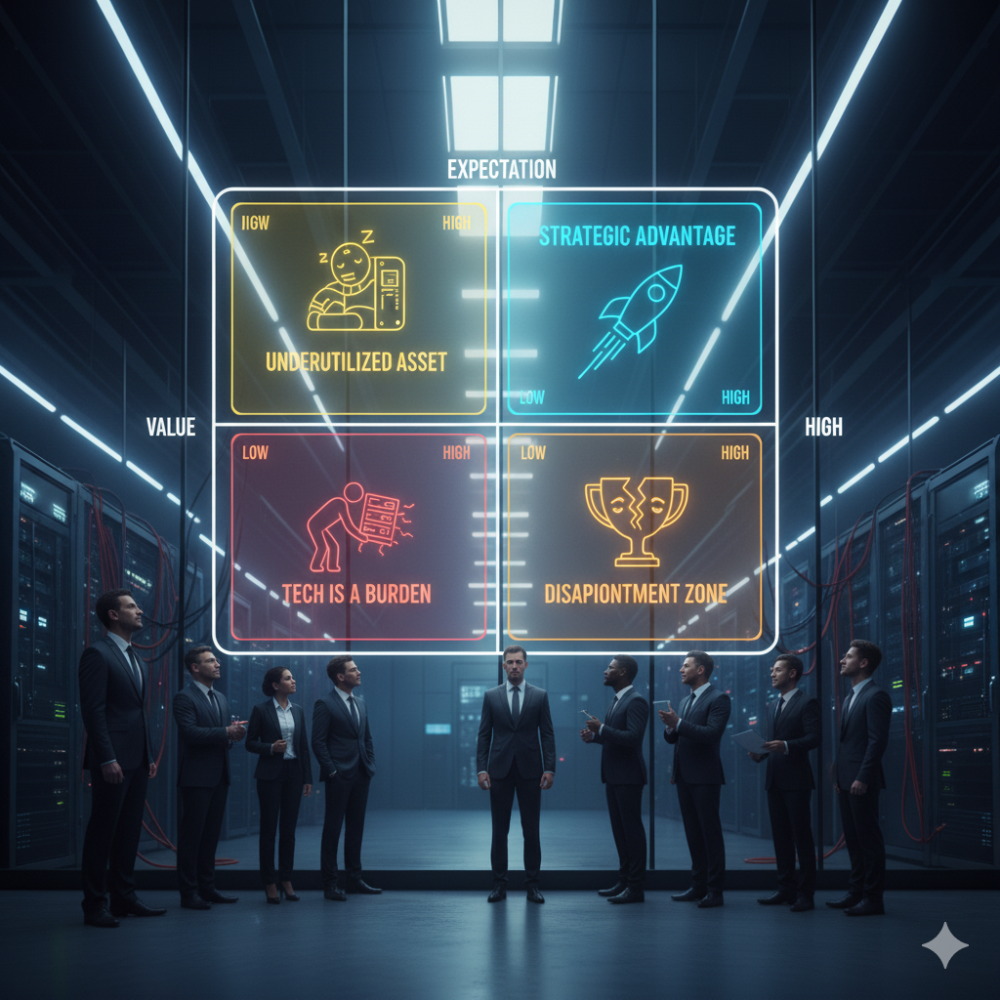AI & Technology Leadership in 2025: From Confusion to Competitive Edge

The Scoreboard Doesn’t Lie
By the end of 2025, organizations are expected to spend nearly $6 trillion on technology. Yet, the failure rate of digital initiatives remains staggering, ranging from 70% to 95% that flop. That’s not a technology problem. That’s a leadership problem.

The issue isn’t tools it’s leaders who never answer two fundamental questions:
- What value do you actually place on technology?What do you honestly expect it to deliver?
- If your answers are vague, your strategy is weak. If your answers are small, your culture stays small.
The Leadership Blind Spot: Developmental Debt
Most leaders underestimate the hidden tax slowing their teams down: developmental debt.
Here’s what I mean. Your team still struggles with basics Excel formulas, Outlook rules, and Teams file versioning. Then leadership piles on AI workflows. The result? Confusion, frustration, and failed adoption.

We saw this with a manufacturing client. Their employees were drowning in spreadsheets and endless email threads. Before we even touched AI, we trained them on Microsoft 365 fundamentals. Then we layered in Copilot for forecasting. Within 90 days, productivity increased by 22%. The AI wasn’t the magic the fundamentals were.
Lesson: You can’t run trick plays if your offensive line can’t block. Pay down the debt before you call in AI.
A Quick Note Before We Go Any Further
I really dislike lumping everything under the catch-all banner of “AI.” It’s lazy, and it creates confusion. For the sake of this article, when I say AI, I’m referring to the full spectrum of capabilities: RPA for rule-based task automation, Machine Learning (ML) for predictions, Deep Learning (DL) for complex patterns, NLP for language, Computer Vision (CV) for images and video, Generative AI (GenAI) including LLMs and multimodal models for creating text, code, and media, and MLOps/Governance for responsible deployment and management.
In other words, when you hear me say AI, don’t think buzzword. Think roster of players, each with a different role to play in how you lead and win with technology.
Treat AI Like a New Employee
AI isn’t a project. It’s not a gadget. It’s your newest employee.

Like any rookie, it needs:
- A clear role (what it does and doesn’t do)
- Coaching and training (feeding it the correct data, aligning to workflows)
- Performance expectations (tied to business outcomes, not hype)
We coached a financial services firm through this shift. Instead of tossing AI into customer support as a cost-cutter, they treated it as a teammate. We “onboarded” an agent with FAQs, escalation rules, and success metrics. Within months, response times were 40% faster, client satisfaction increased, and frontline employees experienced reduced burnout.The difference? They coached AI like a player, not a product.
The Technology Leadership Maturity Model
To get out of the confusion trap, leaders need a clear roadmap. That’s where the Technology Leadership Maturity Model comes in.
- Level 1 – Reactive: Tech as a cost. Everything’s crisis-driven.
- Level 2 – Operational: Tech as a tool. Focus on efficiency.
- Level 3 – Strategic: Tech as an enabler. IT aligns with business goals.
- Level 4 – Transformational: Tech as a competitive edge. Leaders experiment adapt fast.
- Level 5 – Visionary: Tech as a market creator. They shape industries.
One of our law firm clients was stuck at Level 2 using IT to automate processes. We helped them climb to Level 3 by applying AI to case law research. Suddenly, accuracy jumped from 85% to 94% and they expanded revenue by handling more caseloads.
The difference between losing and winning is simply which level you’re willing to play at.
The Value vs. Expectation Framework
Here’s the simplest lens I can give you. Plot your organization on this 2x2:
- Low value / Low expectation: Tech is a burden.
- Low value / High expectation: Disappointment zone.
- High value / Low expectation: Underutilized asset.
- High value / High expectation: Strategic advantage.

A regional construction firm we worked with sat in the “disappointment zone.” They expected AI to fix broken processes, but hadn’t valued it enough to change workflows. We reset expectations, cleaned their foundation, and built governance. Within 6 months, their IT went from constant firefighting to a stable platform ready for multimodal AI.
The framework doesn’t lie if you’re in the wrong quadrant, your results will show it.
Risks, Controls & Governance
Here’s where most executives get exposed. The most significant risks in AI aren’t technical—they’re leadership gaps:
- Shadow AI: employees using unauthorized tools
- Bias & ethics lapses: lawsuits and brand damage
- Governance gaps: security, compliance, accountability
Blocking AI doesn’t work. Binders of policies don’t work. You need adaptive governance—principles, guardrails, and real-time monitoring to ensure effective decision-making. Done right, governance becomes a competitive advantage. It builds trust with customers and confidence with employees.
The Leadership Challenge
The scoreboard is clear: 70–95% of tech projects fail. But the winners prove the path forward:
- Pay down developmental debt
- Treat AI like your newest employee
- Climb the maturity model deliberately
- Align value with expectation
- Execute a 30–60–90 plan
We’ve watched clients in healthcare, manufacturing, legal, retail, and finance flip confusion into a competitive edge by running this exact playbook.The companies that win in 2025 won’t be the ones with the most AI they’ll be the ones with the most disciplined leadership.
Here’s my challenge:
This quarter, don’t ask what AI can do. Ask what you expect it to do and what value you actually place on it. If your answers are vague, your strategy is weak. If your answers are small, your culture will stay small. The future belongs to leaders who demand more value, set higher expectations, and coach their teams to execute with discipline.The scoreboard doesn’t lie. Where will you be standing when the clock hits zero?